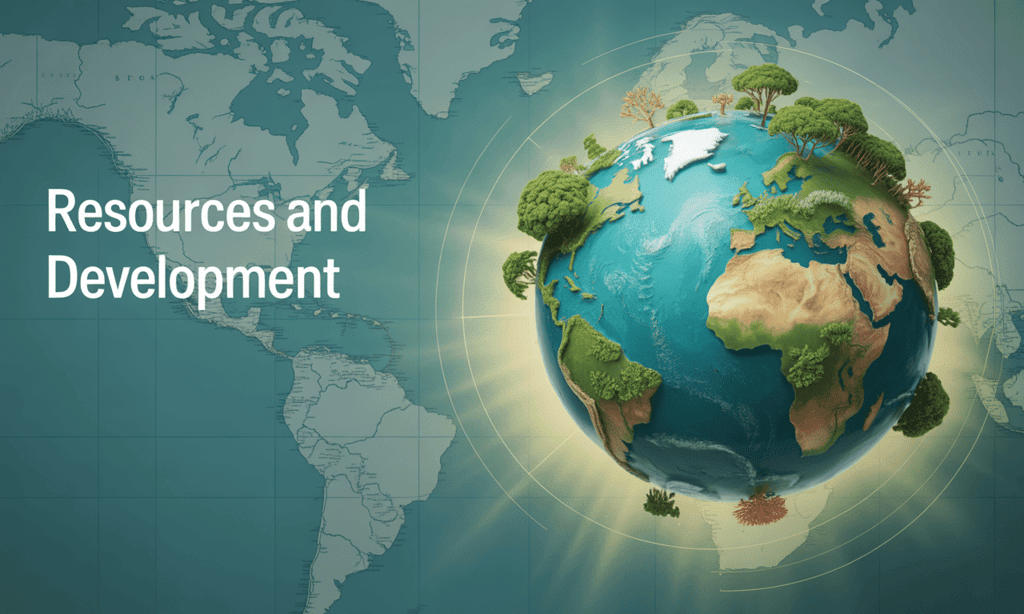Mnemonics: Resources and Development | Social Studies (SST) Class 10 PDF Download

1. Definition of Resources
Mnemonic: "TEC"
Interpretations:
T: Technologically accessible
E: Economically feasible
C: Culturally acceptable
Explanation: A substance becomes a resource only when it is Technologically accessible, Economically feasible to extract or use, and Culturally acceptable to the people using it.
2. Classification by Origin
Mnemonic: "BA – Biotic Abiotic"
Interpretations:
B: Biotic – living origin (plants, animals, humans)
A: Abiotic – non-living (minerals, water, air)
Explanation: Resources are classified as Biotic or Abiotic based on whether they originate from living organisms or non-living elements of the earth.
3. Classification by Exhaustibility
Mnemonic: "Re-New, No-New"
Interpretations:
Re: Renewable – can be replenished (solar, wind, forests)
No: Non-renewable – exhaustible (coal, petroleum, minerals)
Explanation: Renewable resources regenerate over time; non-renewable ones take millions of years and are limited in supply.
4. Classification by Ownership
Mnemonic: "ICNI"
Interpretations:
I: Individual – privately owned
C: Community – accessible to all in a region
N: National – owned by the nation/government
I: International – shared or managed beyond national borders
Explanation: Resources are classified based on ownership patterns—ranging from private lands to international water bodies like the ocean beyond EEZ limits.
5. Classification by Development Status
Mnemonic: "PDSR"
Interpretations:
P: Potential – exist but unused
D: Developed – surveyed and in use
S: Stock – available but can’t be used now
R: Reserves – part of stock currently usable
Explanation: Resource development depends on technology and human needs. Some are fully developed, while others await future exploitation.
6. Resource-Rich but Poor Regions
Mnemonic: "JMRL"
Interpretations:
J: Jharkhand
M: Madhya Pradesh
R: Rajasthan
L: Ladakh
Explanation: These regions have abundant natural or cultural resources but suffer from issues like poor infrastructure or lack of water.
7. Causes of Land Degradation
Mnemonic: "MOOIMW"
Interpretations:
M: Mining
O: Overgrazing
O: Over-irrigation
I: Industrial effluents
M: Mineral processing
W: Waste dumping
Explanation: Unsustainable human activities like mining and over-irrigation lead to loss of productive land quality.
8. Types of Soils in India
Mnemonic: "ABRLAF"
Interpretations:
A: Alluvial – fertile, Indo-Gangetic plain
B: Black – cotton soil, moisture-retentive
R: Red & Yellow – poor fertility, southern India
L: Laterite – acidic, leached, tea/coffee
A: Arid – sandy, low humus
F: Forest – hill soils, loamy/silty
Explanation: Soils differ by region, origin, fertility, and use. Each type has agricultural or ecological value.
9. Types of Soil Erosion
Mnemonic: "GSWD"
Interpretations:
G: Gully erosion – deep cuts (Chambal)
S: Sheet erosion – uniform topsoil removal
W: Wind erosion – dry areas
D: Defective farming – improper ploughing
Explanation: Improper land use and natural forces cause soil erosion, reducing fertility and productivity.
10. Soil Conservation Methods
Mnemonic: "CTSS"
Interpretations:
C: Contour ploughing – across slopes
T: Terrace farming – steps in hilly areas
S: Strip cropping – alternating crops
S: Shelter belts – tree rows to block wind
Explanation: These methods help prevent soil erosion and conserve soil fertility, especially in vulnerable areas.
|
94 videos|630 docs|79 tests
|
FAQs on Mnemonics: Resources and Development - Social Studies (SST) Class 10
| 1. What are the main types of resources discussed in the Resources and Development chapter? |  |
| 2. How do human activities impact resource development? |  |
| 3. What are renewable and non-renewable resources, and can you provide examples of each? |  |
| 4. Why is sustainable development important in the context of resource management? |  |
| 5. What role does technology play in resource development? |  |





















